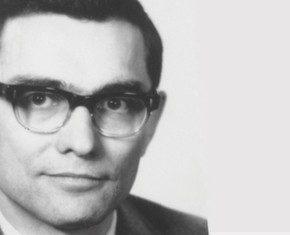The views expressed in our content reflect individual perspectives and do not represent the authoritative views of the Baha'i Faith.
… whoso looketh for Christ in His physical body hath looked in vain, and will be shut away from Him as by a veil. But whoso yearneth to find Him in the spirit will grow from day to day in joy… In this new and wondrous day, it behooveth thee to seek after the spirit of Christ. – Abdu’l-Baha, Selections from the Writings of Abdu’l-Baha, p. 143.
As a child of seven Joseph Wolff attempted to convince his Christian neighbor that Israel would triumph with the coming of the Messiah. In response, the neighbor encouraged the child to read the 53rd chapter of Isiah. He explained that Jesus of Nazareth was the Promised Christ, whose sacrifice is extolled in the passage excerpted here:
… and by his wounds we are healed. We all, like sheep, have gone astray, each of us has turned to our own way; and the Lord has laid on him the iniquity of us all. – Isaiah 53:5-6.
The young man sought his father’s interpretation of the passage, but the Rabbi Wolff had no answer. This kindled a desire in the boy to read and reconcile Jewish prophecy with Christian claims. One of the most important of these prophecies was that Elias (Elijah) would precede the Messiah. The Old Testament states:
Behold I will send you Elias the prophet before the coming of the great and dreadful day of the Lord. Malachi 4:5.
Christians made the claim that John the Baptist was the promised Elias. However, John the Baptist declared he was not Elias. “They asked him, ‘Then who are you? Are you Elias?’ He said ‘I am not.’” – John 1:21. Christians argued that John was Elias because Christ said so here:
…Jesus began to speak to the crowd about John… This is the one about whom it is written: I will send my messenger ahead of you… And if you are willing to accept it, he is the Elias who was to come. – Matthew 11:7-13.
For those who accept Jesus the Christ as the manifestation of God, his declaration is sufficient. However, many others see these two Biblical passages as a contradiction. Let us apply the rigor of science in an analogy that can help us appreciate the difference between the form and the function of a phenomena. By doing this we may be able to see how John and Jesus are, each from a particular perspective, both correct.
Specifically let’s consider the common tendency to confuse cause and correlation. In temperate climes in the Northern hemisphere we eagerly await the coming of spring at the end of March. However–is it the date of the vernal equinox or the frost receding that brings spring? Actually, neither. Winter turns to spring when the movement of the earth’s orbit brings the Northern hemisphere closer to the sun. However, from the farmer’s perspective, when the earth thaws spring arrives.
This is when the sun’s power and influence are conspicuous, literally bringing the world back from the death of winter. In the same way, the advent of the prophet of God marks a spiritual spring, when the Sun of Truth thaws the materialism and hatred that hardens human hearts, bringing the fruits of love and self-sacrifice.
For Joseph Wolff and the handful of Jews of his generation who converted to Christianity; Jesus’ advent fulfilled prophecy. In their estimation John performed the role of Elias saying, “’I am the voice of one calling in the wilderness, ‘Make straight the way for the Lord.’”- John: 1:23. John the Baptist and Elias were one in purpose, but entirely separate in person, time and place.
In the Baha’i teachings, Abdu’l-Baha explains:
…we consider here not the individuality of the person but the reality of his perfections—that is to say, the very same perfections that Elias possessed were realized in John the Baptist as well. Thus John the Baptist was the promised Elias. What is being considered here is not the essence but the attributes. – Abdu’l-Baha, Some Answered Questions, newly revised edition, p. 150.
Joseph Wolff converted to Christianity because he perceived John the Baptist to be the return of Elias, and observed in Christ’s life and teachings the functions of the promised Messiah. He became a missionary travelling throughout the Middle East and Europe. He was convinced that the work being performed by himself and others fulfilled Matthew 24:14: “And this gospel of the kingdom will be preached in the whole world as a testimony to all nations…” He was not alone.
John Wolff won several people to his perspective, including Harriet Livermore. She was so influential that she was invited to address the President of the United States and the entire United State Congress in January 1827. Millennial fervor grew as Bible scholars around the world perceived the unfolding fulfillment of prophecy.
For example, on March 23, 1844, the Ottoman Empire signed the Edict of Toleration, opening the door for the Jews to return to their homeland. Several claimed that this was fulfillment of Luke 21:24: “…and they shall fall by the edge of the sword, and shall be led away captive into all nations. And Jerusalem shall be trodden down by the Gentiles until the times of the Gentiles be fulfilled.”
In the next two articles in this series, we’ll continue to explore the most extraordinary Biblical prophecies associated with the date of the advent of Christ, and the exciting story of the discovery of his second coming.
















Comments
Sign in or create an account
Continue with Googleor